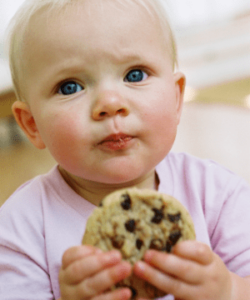Navigating the world of autism and ABA therapy can often feel like learning a new language, both for new and experienced parents alike. From countless acronyms to unusual scientific vocabulary it can be challenging to fully understand all the information you are being presented with.
To help make things a little bit easier here is our comprehensive list of important autism and ABA-related vocabulary you are likely to come across.
A
AAC (Augmentative and Alternative Communication)
Any method of communicating that does not use vocal speech. Instead, signs, gestures, picture/symbol boards, electronic devices, non-electronic devices, and other forms of communication may be used. These methods can help individuals who are non-verbal or who need to supplement their speech.
ABA (Applied Behavior Analysis)
An evidence-based therapy that teaches communication skills, social skills, and skills for independence by utilizing basic principles of behavior, special techniques, and positive reinforcement. This therapy can also help reduce challenging and harmful behaviors such as self-injury.
ABC Data (Antecedent, Behavior, Consequence)
A way to gather information related to behavior.
A – Antecedent: The event, action, or circumstance that occurs immediately before a behavior.
B – Behavior: The behavior itself.
C – Consequence: The response that immediately follows the behavior.
ABLLS (Assessment of Basic Language and Learning Skills)
An assessment designed to determine one’s current learning capabilities and one’s potential learning capabilities in regard to language.
Access to Attention
Attention given to a child such as praise or even a reprimand to reinforce a behavior. Attention can be used to reinforce both positive and negative behaviors.
 Access to Tangibles
Access to Tangibles
Any time a behavior is reinforced by an individual engaging in behavior to gain access to something physical such as toys or food. Tangibles can be any physical object or even environment.
Acquisition
The time during which an individual is learning a new behavior. Data collected on the rate (speed) and accuracy of the skill being acquired informs the interventionist working with an individual whether the teaching procedures being used are efficient or need to be adjusted.
ADA (Americans with Disabilities Act)
The federal civil rights law protecting individuals with disabilities. The ADA was enacted in 1990.
Adaptive Skills
Self-help skills a child uses for daily living such as feeding, toileting, and dressing.
ADI-R (Autism Diagnostic Interview-Revised)
A common diagnostic tool used to screen for and diagnose children with autism. This assessment does not directly involve the child—instead, an interview conducted by a trained researcher or psychologist with the child’s parents or other caregivers. The interview focuses on the developmental history of the child.
ADOS-2 (Autism Diagnostic Observation Schedule)
A common activity-based assessment tool used for diagnosing autism in children. This assessment evaluates your child’s communication skills, social interactions, and play skills.
Antecedent
See ABC Data
Apraxia of Speech
A brain/motor speech disorder where the brain cannot effectively coordinate the muscle movements necessary to say words, specific sounds or syllables.
Assessment
A way to identify the needs of an individual and how those needs will be addressed.
In ABA an assessment is a structured process used by a Board Certified Behavior Analyst (see BCBA) to understand your child’s current skills, behaviors, and areas that require support. An ABA assessment collects information from caregiver interviews as well as direct observation to individualize the recommendation for your child.
Auditory Processing Disorder (APD)
A disorder where the brain has difficulty understanding and coordinating speech and sound. A person with APD will struggle to hear subtle sound differences in words. APD may also be referred to as a central auditory processing disorder.
Autism Spectrum Disorders (ASD)
An umbrella term used to describe an array of neurological disorders that affect a child’s ability to interact, communicate, relate, play, imagine, and learn.
Automatic (Reinforcement)
This form of reinforcement occurs when a person’s behavior creates a positive outcome without the involvement of another person (see Functions of Behavior). Examples may include repetitive behaviors such as spinning in circles, pacing, rocking back and forth, humming/singing, and flapping hands.
B
Baseline
Consists of the data collected on a target behavior in natural conditions before intervention has begun. This data is a starting point that allows care teams to observe and track the changes that occur once the intervention has begun.
BCBA (Board Certified Behavior Analyst)
The graduate-level certification in behavior analysis. BCBAs are independent practitioners who provide behavior-analytic services. A BCBA’s duties include but are not limited to conducting assessments, writing behavior plans and treatment programs, and training staff and parents. BCBAs may supervise the work of Registered Behavior Technicians (see RBT) and other professionals who implement behavior-analytic interventions.
BCBA-D (Board Certified Behavior Analyst-Doctorate)
A Board Certified Behavior Analyst (see BCBA) who received their Ph.D..
BHCOE (Behavioral Health Center of Excellence)
A certification and a distinction among ABA providers that demonstrates an organization’s commitment to quality and continuous improvement in applied behavior analysis.
Behavior Intervention Plan (BIP)
A plan to prevent and respond to a child’s specific behaviors. Includes preventative strategies such as fostering positive behavior, environmental changes, visual supports, positive reinforcements, and other necessary supports.
C
Caregiver Training
See Family Training
CARS-2 (The Childhood Autism Rating Scale, 2nd Edition)
A diagnostic tool used by neurologists/psychologists to diagnose autism in a child. A trained clinician will use a scale to rate items indicative of Autism Spectrum Disorder (ASD) after direct observation of the child. It can be used with individuals of all ages and in both clinical and research settings.
CHAT (Checklist for Autism in Toddlers)
A screening tool used to detect early signs of autism. It is commonly recommended that CHAT be used to examine a child during their 18-month developmental check-up. CHAT looks at early communication and social developmental milestones in a child.
Clinical Recommendation
The recommended therapy hours, program, and goals to achieve the set outcomes for the child based on direct and indirect assessments.
Cognitive-Behavioral Therapy (CBT)
A type of psychotherapy in which negative patterns of thought about the self and the world are challenged in order to alter unwanted behavior patterns or treat mood disorders such as depression.
Comorbidity
The simultaneous presence of two chronic diseases or conditions in a patient. Many things are often comorbid with autism. For example, many individuals with autism may also have epilepsy or obsessive-compulsive disorder (OCD).
 Comprehensive Treatment Plan/Program
Comprehensive Treatment Plan/Program
A written plan of care developed by a multidisciplinary treatment team for an individual based on an assessment of the patient’s needs. This plan will include treating skills deficits and behavior concerns across all medically necessary domains.
Conditioned Reinforcer
A reinforcer that was previously neutral, but has become a reinforcer. For example, money becomes a conditioned reinforcer by being paired with the items it purchases. Interventionists may become conditioned reinforcers for their student’s behavior, through being paired with other reinforcers (e.g. praise, tokens, favored activities, etc.).
D
Data
The objective facts and statistics collected together for reference or analysis.
Developmental Delay
Slower than usual progression or reversal of typical developmental phases (such as communication or walking) expected for a child’s age range.
Developmental Milestones
Markers used to monitor a child’s developmental skills. These markers consist of skills and behaviors that should be developed by a certain age.
Differential Reinforcement
A strategy used in ABA to address challenging or undesirable behavior, usually in children. Different techniques may be used, but the goal is to encourage appropriate behavior by giving or withholding reinforcement.
Direct Instruction
A methodology using a high degree of instructor-directed interaction with positive reinforcement used to correct errors and explicit techniques to teach specific skills. There is an emphasis on incremental learning with specific learning tasks that students will master before moving on to the next level.
Discrete Trial Teaching (DTT)
A structured way of teaching in simple steps using the ABC (antecedent – behavior – consequence) (see ABC Data) framework, in which a task is broken down and taught in steps and then built back up to the entire task.
DSM-5 (Diagnostic and Statistical Manual)
The official system for the classification of psychological and psychiatric disorders. This manual is prepared and published by the American Psychiatric Association.
E
Early Intensive Behavioral Intervention (EIBI)
An evidence-based, individualized form of instruction and treatment using the principles of ABA to teach adaptive behaviors and skills to young children with autism. There are various models of EIBI, but the general term refers to intervention services that are intended to occur at a high intensity of 25 to 40 hours per week that occur as early as possible (specifically before the child is 7 years old).
Echolalia
Repeating words or phrases heard previously. The echoing may occur immediately after hearing the word or phrase, or much later.
Elopement
To leave without permission or without letting others know where you are going, and without processing the dangers/risks involved in leaving.
 Emotional Regulation
Emotional Regulation
How a child (or any individual) manages their emotions. For example, a child having a tantrum when they want a cookie, versus using their words to ask for a cookie.
Emotional regulation is important for developing relationships, maintaining general health, and handling various social situations.
Error Correction
A procedure used to increase motivation in learning situations by preventing mistakes and creating more opportunities for reinforcement.
Escape
When a child is able to escape an instruction, task, or situation with or without the help of another individual. For example, a child who is able to leave the dinner table at mealtime is able to escape having to sit for the entire duration of a meal.
Extinction
A procedure used in Applied Behavioral Analysis (see ABA) in which reinforcement that is provided for problem behavior (often unintentionally) is discontinued in order to decrease the occurrences of or eliminate the negative (or problem) behaviors. For example, when a child has a tantrum, the behavior is ignored, when previously consoling the child or distracting the child with treats may have been used.
F
Family Training
Services provided to the family or caregiver by qualified personnel to assist in understanding a child’s needs and helping a child’s development.
Feeding Therapy
A form of therapy in which a trained occupational or speech therapist helps teach a child how to eat or eat better and tolerate different foods, textures, and tastes.
Focused Treatment Plan/Program
A written treatment plan that focuses on treating skills deficits in one or two areas. For example, a focused treatment program may focus on reducing problem behaviors only and not address any other adaptive or developmental skills.
Functions of Behavior
Used in ABA therapy to understand specific behavior and why it occurs.
The four functions of behavior include:
- Sensory Stimulation (Automatic)
- Escape
- Access to Attention
- Access to Tangibles
G
Generalization
When a child learns a skill in one environment and can use that skill across different new environments or situations. For example, a child can now request to use the bathroom in the home with an RBT (see Registered Behavior Technician). The child has generalized that skill when they can request to use the bathroom at school with a teacher and/or, at grandma’s house with grandma or other family members.
Gestalt Language Learner
A way of learning in which an individual processes language in chunks rather than one word at a time. A child may speak in phrases heard from movies, rhymes, or stories and apply them to everyday situations.
H
Habituation
A form of learning in which a non-reinforced response to a stimulus decreases after repeated or prolonged exposure.
High Probability Instruction/Task
A series of tasks given to an individual which they are likely to complete, immediately followed by a task an individual is less likely to complete.
I
 IEP (Individualized Education Plan)
IEP (Individualized Education Plan)
An academic support plan which helps ensure that a child with a disability can access their curriculum. This plan will identify the student’s specific learning expectations, develop goals, and outline how the school will address these expectations through appropriate programs and services.
An IEP is reviewed annually to determine progress.
Imitation
The ability of a child to mimic another behavior demonstrated by another person.
Incidental Teaching
A form of teaching that utilizes naturally occurring opportunities to teach, often with student-initiated activities. For example, when teaching a child to request a toy, a toy is placed in a container that is not easy for the child to access or out of the child’s reach. The child is then prompted to ask for the toy and receives positive reinforcement in the form of accessing the toy.
Inclusion
The action or state of including or being included within a group or structure. The practice of providing equal access to opportunities and resources for people who might otherwise be excluded or marginalized (e.g., those with physical or intellectual disabilities, and members of other minority groups).
Intraverbal
Often considered a complex skill to teach, intraverbal is a form of verbal behavior where the speaker responds to another’s verbal behavior. For example, filling in the blank, answering a question, commenting, or having a conversation.
J
Joint Attention
The shared focus of two individuals on an object. This can be achieved by one individual alerting another to an object by eye-gazing, pointing, or other verbal or non-verbal indications.
K
Kinesthetic learning
Learning by hands-on learning, versus passively listening or reading to a lesson.
L
Latency
The time between when an instruction is presented to a child to when the child follows the instruction. For example, when getting ready to leave the house, you ask your child to get their shoes. How long it takes for them to get their shoes after you ask is the latency.
M
Maintenance
The ability to consistently maintain a previously acquired skill and perform it once the ABA procedures have been removed.
Maladaptive Behavior
A behavior or set of behaviors that interferes with an individual’s activities of daily living or ability to adjust to and participate in particular settings.
Mand
A request for something there is motivation for or a request to end something undesirable. For example, a child asking or pointing for a cookie is a mand. A child saying, “no more” to stop a certain activity is also a mand.
Medical Necessity
Prescribed healthcare services and supplies essential for activities of daily living such as (eating, dressing, communicating, etc.). Medical necessity includes a medical diagnosis, and how therapy goals would lessen or improve the impact of the symptoms related to the diagnosis.
Meltdown
An involuntary response to sensory or emotional overload and overwhelm. May be mistaken as a tantrum (see Tantrum).
N
Natural Environment Teaching (NET)
A teaching method used in ABA in which learning exercises take place in an individual’s natural setting. This can include everywhere from a home to a playground or grocery store. Teaching opportunities are incorporated while the individual is engaging in regular activities, such as playing. Sometimes referred to as Naturalistic Teaching.
Neurodivergent
An individual whose brain processes information differently from what is considered typical. People diagnosed with autism, ADHD, dyspraxia, dyslexia, and other conditions would all be considered neurodivergent.
Neurotypical (NT)
A term used as a label for people whose neurological development and state are consistent with what most people would perceive as following a “normal” development path.
Novel behavior
A behavior that the person engages in without previous observation of this behavior occurring or specific teaching or training. For example, the first time a child is observed to engage in aggression towards another person can be considered a novel behavior.
O
 Occupational Therapy (OT)
Occupational Therapy (OT)
A form of therapy that focuses on building foundational skills required for activities of daily living, such as those related to fine motor, perceptual and cognitive, self-care, feeding, social and sensory processing.
P
Pairing
The period of time your child’s new therapist spends building a relationship with your child. This usually happens during the first week or two of ABA therapy. During this time, the therapist pairs their presence with reinforcers and activities that are preferred for your child while avoiding placing demands and presenting instructions. This results in a positive therapeutic relationship where your child wants to engage with their therapist and increases their attention to learning activities.
PECS (Picture Exchange Communication System)
A formal, alternative communication system that uses pictures to be exchanged to communicate. There are six phases of this systematic procedure. It is common to see informal procedures derived from PECS, and those procedures are often referred to simply as “Picture Exchange.”
Percent Correct
Measures the percent of trials a child responds to correctly on a specific activity. In this data collection procedure, all correct responses are counted for the numerator (may include prompted responses if prescribed). The denominator includes the total number of opportunities presented. This is divided to provide the percent correct.
Percent Independent
Measures the percent of opportunities a child completes independently during a task or activity. In this data collection procedure, all independent responses are counted for the numerator (prompted responses are NOT included). The denominator includes the total number of opportunities presented. This number is then divided to provide the percentage of independence.
Probe
Often done to establish baseline and/or generalization, this assesses if a child has a specific skill or part of a skill in their repertoire.
Perseveration
Repeating or persisting with an action or behavior after the stimulus that prompted it has ceased.
Physical Therapy (PT)
A form of therapy that focuses on enabling bodily movement and preventing the onset of mobility difficulties.
Pivotal Response Training
An intervention based on the principles of ABA which focuses on building and improving the basic principles of behavior modification. This form of intervention will use a child’s natural motivations (toys, games, and activities that a child wants and cares about) to teach and reinforce new behaviors.
Preference Assessment
A process that allows ABA therapists to determine the hierarchy of a child’s preferred items, from low preferred to highly preferred ones.
Prompt
Instructions, gestures, demonstrations, touches, or other things that are used to increase the likelihood that a child will make the correct responses.
Prompt Fading
The process of gradually reducing the use of prompts to work toward independence.
Proprioception
Our body’s ability to sense the position of our body parts in relation to one another and the amount of strength it takes to create movement.
Q
R
Rate
A measure of how often behavior occurs over time.
Redirection
A technique used in ABA to distract a child from a problem behavior, or lead them to engage in a more appropriate behavior than the one they are currently engaging in.
Registered Behavior Technician (RBT)
A paraprofessional in ABA who works one-on-one or in small groups with clients and their families dealing with learning behavioral challenges.
Reinforcement
A consequence that increases the future frequency of that type of behavior that immediately precedes it. A consequence can be either positive or negative.
Restricted Behaviors
Deliberate, repetitive behaviors or actions with a set of rules for completion. May involve counting or cleaning and can be identified early through restricted patterns of interest.
S
Shaping
Providing positive reinforcement upon observance of successive approximations to getting closer to a terminal behavior. For example, when a child first rolls over, we p






